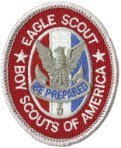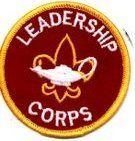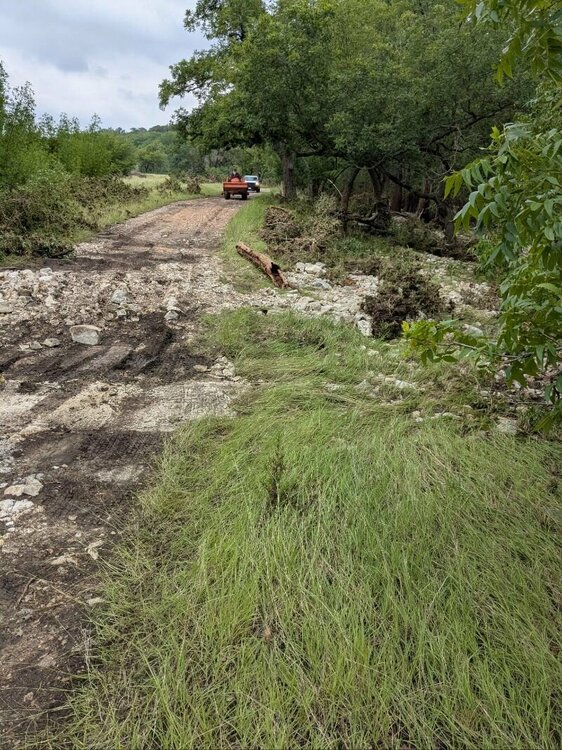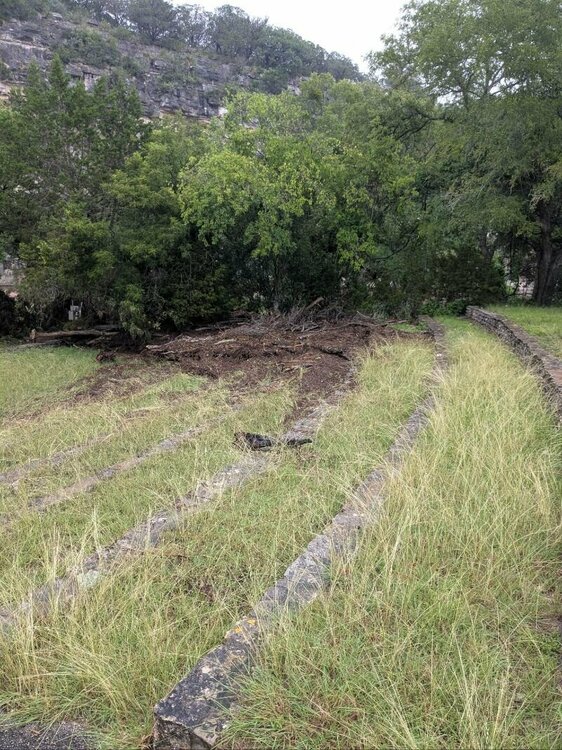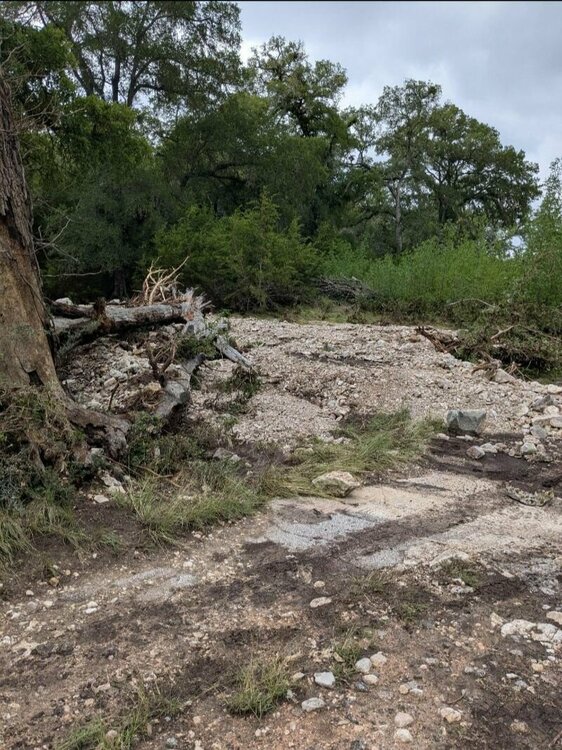All Activity
- Past hour
-
The qualified adult may supervise a team of competent youth. Your location is non-trivial. It is easy to let one’s guard down in a home pool. Simplest suggestion; make sure everyone has left the water at designated times. Don’t take for granted the swimmer on the ladder will be out if your back turns away.
-
Lazarlink9510 joined the community
- Yesterday
-
There are no minimum age and qualifications for that role. The Aquatics Supervision manual, which is the ultimate printed authority, says on page 6-6, under Safe Swim Defense (SSD), (emphasis added), 4. Response Personnel (Lifeguards) Every swimming activity must be closely and continuously monitored by a trained rescue team on the alert for and ready to respond during emergencies. Professionally trained lifeguards satisfy this need when provided by a regulated facility or tour operator. When lifeguards are not provided by others, the adult supervisor must assign at least two rescue personnel, with additional numbers to maintain a ratio of one rescuer to every 10 participants. The supervisor must provide instruction and rescue equipment and assign areas of responsibility as outlined in this book. The qualified supervisor, the designated response personnel, and the lookout work together as a safety team. An emergency action plan should be formulated and shared with participants as appropriate. If the other elements of Safe Swim Defense are in place, water rescues will seldom be needed. Most lifeguards at Scout summer camps, many of whom work several seasons, are never called upon to make a rescue. The same should be true at unit swims. Even so, there is always some chance of an unexpected medical emergency or other situation that could incapacitate a person in the water. Fortunately, rescues in a controlled situation are relatively safe, simple, and easy to learn. Danger could arise if a would-be rescuer is a poor swimmer ill-trained and ill-equipped for the situation, or if water conditions are hazardous. However, hazardous water situations would violate the third tenet of Safe Swim Defense and should not be present at a unit swim site. Chapter 10 will alert the reader to skills that should be mastered to ensure victim and rescuer safety, the equipment that supports those skills, and situations that should be included in emergency action plans. Older youth and adults who have completed the Lifesaving merit badge, Swimming and Water Rescue, are candidates for response personnel, as are those who have American Red Cross or other professional lifeguard training. Other good swimmers may be used to maintain the required 1 to 10 ratio if coached in basic surveillance and rescue techniques. The line-and-tender procedure for the First Class rank is one such technique. Adult leaders, including the qualified supervisor, may serve as response personnel for an entire activity that is not too long. Short breaks in concentration are provided during buddy checks. If youth are used, they will generally need to be rotated so that they too may enjoy the activity. The emergency action plan may specify that response personnel with more training will handle special situations, such as a spinal injury, whereas all response personnel may respond when a reaching rescue is indicated. Response personnel will generally work as buddy pairs, with each buddy monitoring the other. Note that council maintained and operated swimming areas, such as those at council camps, are subject to state codes and typically must have professionally trained lifeguards on duty. Regulatory requirements for the number, training, and supervision of those lifeguards supercede Safe Swim Defense protocols for response personnel for unit swims. That is, council camps are “regulated facilities” that must use professionally trained lifeguards in numbers mandated by statutes. The 1:10 ratio for lay rescue personnel does not apply. https://filestore.scouting.org/filestore/Outdoor Program/Aquatics/pdf/Aquatics_34346.pdf A lot to unpack there... basically, read Chapter 10, and if your rescue team has those skills, you are good to go. Minimum number of people to conduct a unit swim? Four... 1. Lookout 2 & 3. Rescue team 4. A "swimmer" Any two of those four could be the 21+ year olds, one for SSD Supervision, and the second to cover your two-deep requirement for the event. --------------------------------------------------------------------------------------------------------------------- Here are some "qualifications" available to you, as an adult leader to select from, to meet this point of SSD: (not all inclusive, and listed in decreasing order of "trust" (my opinion only)...) A. Go to National Camping School and become a Scouting America Aquatics Instructor, and train your troop. B. Become a certified lifeguard through an accredited agency (American Red Cross, American Lifeguard Association, United States Lifesaving Association, etc, etc, etc) C. Become a Scouting America Swim and Water Rescue Instructor, and train your troop... D. Become Scouting America Swim and Water Rescue certified E. Lifesaving Merit Badge F. Swimming Merit Badge G. Swim and rescue skills up to First Class. As the adult leader assuming responsibility for the safe conduct of the swim, you determine whether you meet the SSD point of : All swimming and activity afloat must be supervised by mature and conscientious adults, age 21 or older, who - understand and knowingly accept responsibility for the well-being and safety of youth members in their care, - are experienced in the particular activity, - are confident in their ability to respond appropriately in an emergency, and - are trained and committed to the nine points of Scouting America’s Safety Afloat and/ or the eight points of Safe Swim Defense. Good luck!
-
Maybe it's that I was a scout, maybe it's that I'm from a country with high accountability expectations for politicians, maybe it's because it was my job for many years to foresee and prevent problems so that we delivered to spec on time... But it blows my mind that people keep doing this. Both that the government allows it and that people don't learn and so many act like this came out of left field. It absolutely did not. It's one thing to not know. Even if perhaps you should have been more curious or critical or something. It's something completely different to know and not act. And it sure wasn't the responsibility of children to do floodplain management.
-
What do these people do at work when they need to train someone? Do they just go "hey Jimmy, find someone around here to teach you!" or do they pair Jimmy directly with a mentor, or themselves as a mentor.
-
The safe swim defense is not the greatest at explaining things. Even at a personal pool you have to have ability groups, a health review is recommended, you need 1 responsible adult 21yrs or older as the swimming supervisor. You have to have a trained responder (the rules on this are really basic, a strong swimmer 1st class or higher ranked scout can be the aka lifeguard), and you need 1 observer for every 10 swimmers. There are a number of other items as well.
-
Aquatics guide is now available digitally: https://filestore.scouting.org/filestore/Outdoor Program/Aquatics/pdf/Aquatics_34346.pdf?_gl=1*o4y99g*_gcl_au*MTQ1MzU5MzYwOC4xNzQ5NzM1MDgw*_ga*ODM0ODQ1MjkxLjE3NDk1ODQ2OTI.*_ga_20G0JHESG4*czE3NTI1MTMyNTAkbzMkZzEkdDE3NTI1MTMyNTckajUzJGwwJGgw&_ga=2.213894036.1402502429.1752513250-834845291.1749584692 All swimming and activity afloat must be supervised by mature and conscientious adults, age 21 or older, who • understand and knowingly accept responsibility for the well-being and safety of youth members in their care, • are experienced in the particular activity, • are confident in their ability to respond appropriately in an emergency, and • are trained and committed to the nine points of Scouting America’s Safety Afloat and/or the eight points of Safe Swim Defense. The Den Leader, Cubmaster, Scoutmaster, crew Advisor, or Skipper who accompanies the unit on an outing is responsible for the first and last bulleted points. However, Scouting America policies do not specify that the unit leader must be the one who satisfies all of the above criteria. Under appropriate circumstances, the unit leader may delegate responsibility to others. For example, a Scout troop at a water park with trained lifeguards on duty need not assign separate unit personnel to perform water rescue. A Venturing crew on a whitewater excursion may rely on a licensed outfitter to provide the necessary equipment and trained guides. As the above examples demonstrate, a unit can participate in fun and challenging aquatics activities even if unit leaders lack the knowledge and skill to conduct the activity themselves, provided leaders ensure that others, such as venue staff, provide the required components. On the other hand, a troop on its way to a jamboree need not forgo the use of a hotel pool just because the facility does not employ a professional lifeguard, provided unit leaders are properly prepared.
-
Welcome to the virtual campfire 🔥
-
mrjohns2 started following Home Pool Party
-
Check out the guide to safe scouting and safe swim defense. What do they say?
- Last week
-
PatrickPablo started following Home Pool Party
-
A fellow leader would like to host a meeting at his house and let the scouts use their family pool. We have 16 scouts. There will be a variety of adult leaders present as well. I recently took the Aquatics Supervision course but I'm not clear on what are the minimum age and qualifications/training for the "responder/rescuer" role (relevant since we would need 2 of them for the required 10:1 swimmer: responder ratio). [From the way the book describes the lookout role it seems that scouts can help with that role after having the duties explained to them, but correct me if I'm wrong.] Do any of you know? I came up empty searching the textbook, the Scouting website, and general googling.
-
InquisitiveScouter started following Hello
-
Greetings! Welcome to the forum. Hope you get, give, and share some good advice and experience here.
-
@PatrickPablo welcome to scouter.com
-
PatrickPablo started following Open Discussion - Program
-
PatrickPablo started following Hello
-
Hi everyone, I am a parent of two. My older son joined Rip Van Winkle Council Troop 16 last year. I've been an adult leader on several campouts since he joined (most recently at a week of summer camp), and am also a fully trained Troop Committee member. [Definitely not bragging or anything, just trying to give the kind of introduction information that might be appropriate here.]
-
PatrickPablo joined the community
-
We have a summer camp in the area that flooded badly last weekend called Bear Creek. The only people up there were the Ranger and his family, because the camp is shut down for repairs this summer with all Alamo Area Council activities moved to McGimsey Scout Park in town (and a lot of folks going out of council this year). The eponymous Bear Creek is a tributary to the northern fork of the Guadalupe and it did flash flood, but in the wider context the camp just needs some cleanup. Images council sent out attached. Debris in the Order of the Arrow ring (amphitheater-style seating for campfires) and on the wires for the slides. (We have a swimming area in front of the boathouse (on Bear Creek itself of course) with waterslides and zip lines and a floating dock, but the water slides themselves are only on the river during camp sessions, so they weren't in the river when the flood came.) Our floating dock has been lost. Water entered the Dining Hall from runoff coming down the hill; cleanup will be required. (The dining hall is pretty high up on a hill, where the campsites are also located, and it's a pavilion with rolldown closures of openings rather than real walls.) The Eco Pavilion appears unaffected, and all canoes and kayaks remain in place. The road below the Dining Hall has been washed out, exposing a water line and currently preventing vehicle access to the Valley View campsite. Water also entered the Main (storage area behind a novelty facade of an Old West town at the entrance) and the Ranger’s porch, though thankfully not the Ranger’s home itself. Some fencing is down, including a fence belonging to a neighbor near the rifle range. (The rifle range is located in the creek valley.) I think a lot of us in Alamo Area can't help but put ourselves in the shoes of the parents who lost campers on and off. And in those moments, other than working with other unit leaders to make sure we're Prepared(TM), I often become very proud of Scouting America and scouting. As you may know by now even if you're not in the area, Hunt is geologically very prone to flash flooding and is part of an area colloquially called Flash Flood Alley. Just like heat, severe flash flood risk is baked into the experience of camping there. (This is not the first time campers have died in flash floods outside Hunt.) So, this requires Being Prepared. And all the campsites as well as the staff housing is located near the tops of the hills. The entire valley below would have to fill for campers to be washed away in the middle of the night. That's good, because cell phone reception at Bear Creek ranges from none to text messages only at the hilltops. Had Bear Creek itself risen as much as the entire Guadalupe did at its worst, scouts camping at Bear Creek would probably have had their camp week ruined but they would be alive. Camp Mystic (not accredited) had cabins in not just floodplains but floodways, and we have no people sleeping in even floodplains other than (for some inexplicable reason) the Ranger's house. Source: https://www.houstonchronicle.com/projects/2025/texas-camp-mystic-guadalupe-fema-floodplains/, for reference Bear Creek is really close to Camp Waldemar which is marked on the map. The floodway that goes upwards to the left left of Camp Waldemar is Bear Creek the creek.) Apparently FEMA and Camp Mystic argued about flood plains and cabin locations repeatedly, including when they last expanded Camp Mystic in 2020. (Source: https://www.texastribune.org/2025/07/12/camp-mystic-flood-plain-FEMA/) And we didn't even get close to needing to do anything like that - we just put our campers well away from flash floods and make them all hike up and down hill instead. Good for the folks who planned this camp! Is it irritating to have to hike up and down steep hills in the heat when you're down in Program Valley and realize you forgot something you really must have at your campsite? Yes. Does "Cardiac Hill" deserve its nickname? Maybe not. We are in the physically fit business, after all. But is all the up and down worth knowing that you and your scouts aren't going to die in a flash flood? Absolutely. Safety rules are written in blood, let's not forget. May we all learn to respect the power of nature and be mentally awake enough to recognize when advance planning is the difference between life and death.
-
Rushtucky joined the community
-
How to save a rapidly dying Troop.
HashTagScouts replied to ColorBoomScouting's topic in Open Discussion - Program
Don't disagree with you on when they could have messaged. Does seem to be desired to use NAM as the showcase the past few years- but that could be self-serving trying to get more people to attend ((BSA makes $ off the registration fees for NAM). -
How to save a rapidly dying Troop.
AwakeEnergyScouter replied to ColorBoomScouting's topic in Open Discussion - Program
Maybe I'm just overly cynical, but that sounds like someone in your council fighting the success. It could just be poor job performance, of course. But the kind of stiff, emotional resistance to girls and women being a full, authentic part of Scouting America that some people in the organization have doesn't just evaporate in a year or even in the face of evidence. For them, it's not about success for the organization, it's about forcing the world to be a certain way. In this case cooties-free. It could definitely be that your council's policy is a result of an internal struggle between people who wanted coed and people who didn't. Did you see Scouting Maverick's take on postponing coed in Scouts BSA earlier? https://scoutingmaverick.com/2025/01/21/celebrating-a-sexist-scam-linked-troop-wood-badge-highlights-sas-cultural-rot/ Your example of a CC who is so invested in no girls that he's going to de facto let his unit die rather than go coed isn't the only one I'm sure. Actually, you mentioned several such units, so... They're going to keep shrieking until it stops working, which seems to be roundabout now or soon. But some won't stop shrieking because they realized it's actually fine, they will still sabotage what they can. Meanwhile in my corner of my female-friendly council, many leaders are working together to build out a coed pipeline from Cub Scouts into Scouts BSA. Not coincidentally we're about equal numbers of men and women. And it's working - all of our units are growing. If we keep working, Scouting America is going to come back from cultural oblivion in a decade or so. -
That's exactly where we are right now. Most of the adults in the troop were not Scouts. They took the youth lead concept to an extreme and now we have a patient that is sick. I'm trying to avoid getting to the life support stage, much less CPR. The oldest Scouts have succumbed to sports and the fumes. Half the troop is under the age of 13 and a quarter is under the age of 12. We are going to have to actually teach the PLC, such that it is, how to do the skills and then get them to retain the information long enough to teach it to their patrols.
-

How to save a rapidly dying Troop.
Tron replied to ColorBoomScouting's topic in Open Discussion - Program
I get what you're saying; I would counter though that national should have been able to see that and should have planned that timeline to release the coed program earlier. So right now female membership growth is significantly outpacing male membership growth (I think the NAM numbers were 3x the number of females are joining right now), and most of us have no where to send our female AOLs. I don't know about you guys but my council adopted the dumbest policy during the coed pilot. Only existing linked units from prior to the coed policy can be coed, so we have female AOLs just dropping from the program. Who could be so stupid to think retention of female scout was going to go up in some of these councils where we're stuck telling parents that if they want to keep their daughters in the program they will have to continue to drive an additional 10+ miles just to go to a troop meeting when their sons are swinging around the block for a meeting? -
So we have a framework right. It's clear that adult leaders have to step in and instruct the senior scouts when there is a knowledge gap or lack of retention. This goes back to BP and his original Aids to Scoutmastership. The program has always allowed for adult leaders to step in; how we step in is critical though. My advice, which I would say is backed up by the solid century+ of the program and going back to the root (BP) is, in the absence of capable elected youth leaders, adults step in to teach those youth leaders and get them to the point where they are capable. In short it's a 2 part solution. Part 1) Adults are on hand and always willing to teach the PLC members what they need to do to teach, mentor, and lead the rest of the troop. Part 2) Constantly assessing if you're not being a lazy fat slob by flopping on the phrase "Have you asked your SPL".
-
MrSir changed their profile photo
-
MrSir joined the community
-
Semantics. I'd argue that anyone under the rank of first class is a junior Scout. I wouldn't call one a new Scout after being in the troop for over a year. Splitting the 16 Scouts into two patrols within the new/junior Scout patrol is far easier to manage than one single patrol. The ASMs aren't leading the patrol. They are assigned to them to advise the patrol leader. The handbooks aren't a suicide pact, last I checked. Right now, we have 11 y/o patrol leaders who can't get themselves straight, let alone teach skills to the rest of the patrol. The 14 y/o SPL is likewise lacking in leadership competence, having failed to ensure patrol leaders and meeting focus on Scout skills. In a perfect world, we would have older, more knowledgeable and mature Scouts who would keep the meeting focused. Instead, we have an SPL throwing jello on the roof of a shelter at camp and wondering why no one is following his instructions. It's been 31 years since merit badge factory summer camp. Not Scouting. Our OA chapter isn't much better. I was trying to turn that around until the Army sent me 600 miles away for three years. I've been supporting a troop at that location while simultaneously operating a pack and helping the OA in NC on the weekends.
-
They aren’t teams, they are patrols. They aren’t junior scouts, they are scouts or new scouts. They aren’t lead by an ASM, but by a PL and a troop guide. It’s been awhile, 31 years, I suggest reading the PL, SPL, and SM (Unit Leader) handbooks again. Words matter.
-
How to save a rapidly dying Troop.
HashTagScouts replied to ColorBoomScouting's topic in Open Discussion - Program
I think the roll out timing post NAM 2024 was a little late to see immediate impact - AOLs would have already crossed over at that point. Waiting to give measurement now that they have seen numbers for the pilot units that took on crossovers this spring, plus seeing what recruitment numbers look like for those units as they approach back-to-school recruitment events, you should see a better picture.
-
Posts
-
The qualified adult may supervise a team of competent youth. Your location is non-trivial. It is easy to let one’s guard down in a home pool. Simplest suggestion; make sure everyone has left the water at designated times. Don’t take for granted the swimmer on the ladder will be out if your back turns away.
-
Thanks for the update on Bear Creek. I went there one summer as a youth, and was wondering how they were affected.
-
By InquisitiveScouter · Posted
There are no minimum age and qualifications for that role. The Aquatics Supervision manual, which is the ultimate printed authority, says on page 6-6, under Safe Swim Defense (SSD), (emphasis added), 4. Response Personnel (Lifeguards) Every swimming activity must be closely and continuously monitored by a trained rescue team on the alert for and ready to respond during emergencies. Professionally trained lifeguards satisfy this need when provided by a regulated facility or tour operator. When lifeguards are not provided by others, the adult supervisor must assign at least two rescue personnel, with additional numbers to maintain a ratio of one rescuer to every 10 participants. The supervisor must provide instruction and rescue equipment and assign areas of responsibility as outlined in this book. The qualified supervisor, the designated response personnel, and the lookout work together as a safety team. An emergency action plan should be formulated and shared with participants as appropriate. If the other elements of Safe Swim Defense are in place, water rescues will seldom be needed. Most lifeguards at Scout summer camps, many of whom work several seasons, are never called upon to make a rescue. The same should be true at unit swims. Even so, there is always some chance of an unexpected medical emergency or other situation that could incapacitate a person in the water. Fortunately, rescues in a controlled situation are relatively safe, simple, and easy to learn. Danger could arise if a would-be rescuer is a poor swimmer ill-trained and ill-equipped for the situation, or if water conditions are hazardous. However, hazardous water situations would violate the third tenet of Safe Swim Defense and should not be present at a unit swim site. Chapter 10 will alert the reader to skills that should be mastered to ensure victim and rescuer safety, the equipment that supports those skills, and situations that should be included in emergency action plans. Older youth and adults who have completed the Lifesaving merit badge, Swimming and Water Rescue, are candidates for response personnel, as are those who have American Red Cross or other professional lifeguard training. Other good swimmers may be used to maintain the required 1 to 10 ratio if coached in basic surveillance and rescue techniques. The line-and-tender procedure for the First Class rank is one such technique. Adult leaders, including the qualified supervisor, may serve as response personnel for an entire activity that is not too long. Short breaks in concentration are provided during buddy checks. If youth are used, they will generally need to be rotated so that they too may enjoy the activity. The emergency action plan may specify that response personnel with more training will handle special situations, such as a spinal injury, whereas all response personnel may respond when a reaching rescue is indicated. Response personnel will generally work as buddy pairs, with each buddy monitoring the other. Note that council maintained and operated swimming areas, such as those at council camps, are subject to state codes and typically must have professionally trained lifeguards on duty. Regulatory requirements for the number, training, and supervision of those lifeguards supercede Safe Swim Defense protocols for response personnel for unit swims. That is, council camps are “regulated facilities” that must use professionally trained lifeguards in numbers mandated by statutes. The 1:10 ratio for lay rescue personnel does not apply. https://filestore.scouting.org/filestore/Outdoor Program/Aquatics/pdf/Aquatics_34346.pdf A lot to unpack there... basically, read Chapter 10, and if your rescue team has those skills, you are good to go. Minimum number of people to conduct a unit swim? Four... 1. Lookout 2 & 3. Rescue team 4. A "swimmer" Any two of those four could be the 21+ year olds, one for SSD Supervision, and the second to cover your two-deep requirement for the event. --------------------------------------------------------------------------------------------------------------------- Here are some "qualifications" available to you, as an adult leader to select from, to meet this point of SSD: (not all inclusive, and listed in decreasing order of "trust" (my opinion only)...) A. Go to National Camping School and become a Scouting America Aquatics Instructor, and train your troop. B. Become a certified lifeguard through an accredited agency (American Red Cross, American Lifeguard Association, United States Lifesaving Association, etc, etc, etc) C. Become a Scouting America Swim and Water Rescue Instructor, and train your troop... D. Become Scouting America Swim and Water Rescue certified E. Lifesaving Merit Badge F. Swimming Merit Badge G. Swim and rescue skills up to First Class. As the adult leader assuming responsibility for the safe conduct of the swim, you determine whether you meet the SSD point of : All swimming and activity afloat must be supervised by mature and conscientious adults, age 21 or older, who - understand and knowingly accept responsibility for the well-being and safety of youth members in their care, - are experienced in the particular activity, - are confident in their ability to respond appropriately in an emergency, and - are trained and committed to the nine points of Scouting America’s Safety Afloat and/ or the eight points of Safe Swim Defense. Good luck! -
By AwakeEnergyScouter · Posted
Maybe it's that I was a scout, maybe it's that I'm from a country with high accountability expectations for politicians, maybe it's because it was my job for many years to foresee and prevent problems so that we delivered to spec on time... But it blows my mind that people keep doing this. Both that the government allows it and that people don't learn and so many act like this came out of left field. It absolutely did not. It's one thing to not know. Even if perhaps you should have been more curious or critical or something. It's something completely different to know and not act. And it sure wasn't the responsibility of children to do floodplain management. -
By InquisitiveScouter · Posted
Doing the same thing over and over again, and expecting a different result.... the definition of insanity 😜
-
-
Who's Online (See full list)
-
Popular Contributors


